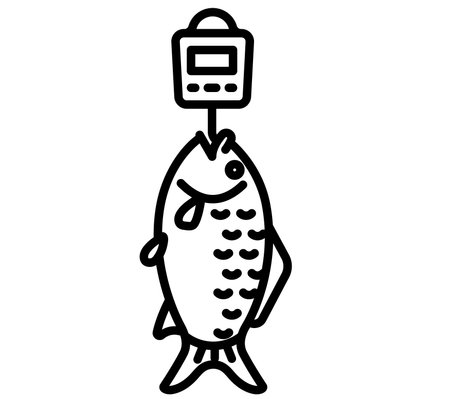Understanding Flats Fishing
Saltwater flats fishing is a unique, adrenaline-pumping pursuit that draws American anglers from coast to coast. But what exactly sets the flats apart from other saltwater environments? The answer starts with the landscape itself: flats are shallow, often crystal-clear stretches of seabed found near shorelines, estuaries, and islands. These areas are typically covered by just a few feet of water at high tide and can be exposed or barely submerged during low tide. The magic of the flats lies in their ever-changing nature—tidal movements constantly reshape the terrain, creating a dynamic hunting ground for both predator and prey.
The flats ecosystem is a bustling microcosm packed with life. Seagrass beds, mangroves, and sandy patches provide vital habitat for crustaceans, baitfish, and some of America’s most prized gamefish—think bonefish, permit, redfish, tarpon, and snook. These species use the shallows for feeding and shelter, making them prime targets for anglers looking to test their skills in skinny water. What makes flats fishing so challenging—and so addictive—is the need for stealth, precision casting, and an intimate understanding of fish behavior. Unlike deep-sea fishing where brute force often wins the day, success on the flats demands finesse and strategy.
For many American anglers, tackling the flats is as much about matching wits with wary fish as it is about soaking up breathtaking scenery. The thrill comes from stalking your quarry in knee-deep water under a wide-open sky—with every step and cast potentially spooking your target. Whether you’re poling across Florida’s famed Keys or wading Texas’ coastal bays, saltwater flats fishing offers a blend of technical challenge and natural beauty that’s hard to beat. It’s no wonder this style of fishing has carved out such a passionate following in the U.S., earning its reputation as both an art form and a rite of passage among serious saltwater enthusiasts.
2. Essential Flats Gear and Tackle
If you want to score big on the saltwater flats, your gear needs to be dialed in for the unique challenges of skinny water. Here’s a breakdown of the core tackle and must-have accessories that every beginner should know about before wading or poling into prime flats territory.
Rods: Light, Fast, and Responsive
Flats fishing is all about stealth and precision. You’ll need a rod that lets you make accurate casts with minimal splash. For most beginners targeting bonefish, redfish, or permit, a 7- to 9-foot fast-action spinning or fly rod rated for 8-20 lb line gets the job done. If you’re fly fishing, an 8-weight rod is the sweet spot for most situations.
Reels: Smooth Drag and Salt-Ready
The flats are home to some hard-charging fish, so your reel needs a buttery-smooth drag system and corrosion resistance. Look for sealed drags and anodized finishes built to handle saltwater abuse. Spinning reels in the 2500–4000 size range are popular for spinning setups, while large arbor fly reels are favored for quick line pick-up.
Recommended Reel Features Table
| Type | Feature | Why It Matters |
|---|---|---|
| Spinning Reel | Sealed drag system | Keeps salt and sand out for longer life |
| Fly Reel | Large arbor design | Faster line retrieval when fish run |
| Baitcaster (optional) | Anodized aluminum body | Corrosion resistance in harsh environments |
Line: Stealth and Strength Combo
Your line is your direct link to the action. On the flats, opt for braided mainlines (10-20 lb test) paired with a fluorocarbon leader (12-20 lb) for spinning outfits. This setup gives you both low visibility and abrasion resistance around coral heads or mangroves. Fly anglers should spool up with weight-forward floating lines matched to their rod weight, with a clear tapered leader finishing the rig.
Terminal Tackle: The Business End
You’ll need a selection of terminal tackle tailored to what’s biting:
- Hooks: Size 1/0–2/0 circle hooks for live bait, #4–#2 for shrimp or small lures.
- Lures: Soft plastics on jigheads, weedless spoons, topwater plugs, and classic bucktail jigs all produce on the flats.
- Weights: Go light—bullet weights or split shot just heavy enough to get you down without spooking fish.
- Popping corks: Deadly for drawing attention in windy or stained water conditions.
Must-Have Accessories for Flats Action
| Accessory | Description/Purpose |
|---|---|
| Polarized sunglasses | Cuts glare so you can spot cruising fish before they see you. |
| Tackle bag/waist pack | Keeps your gear organized and mobile as you stalk the flats. |
| Knee boots/wading shoes | Protects your feet from sharp shells and stingrays in shallow water. |
| Pliers & line cutters | Makes quick work of hook removal or trimming leaders on the fly. |
| Sunscreen & hat | The Florida sun doesn’t play—cover up before you head out! |
| Casting glove (optional) | Saves your fingers during long days of repetitive casting. |
Tough Gear Tips from the Pros:
- Always rinse your rods and reels in fresh water after every trip—salt kills gear fast if ignored.
- Tie strong knots like improved clinch or loop knots—weak connections lose fish!
- If you’re walking long distances, pack light but never skimp on pliers, extra leaders, and water—comfort matters as much as catching fish out here.
This arsenal will have any rookie ready to hit American saltwater flats with confidence and grit. Next up: dialing in tactics for spotting fish before they spot you!
![]()
3. Top Target Species and Seasons
If you’re new to saltwater flats fishing, knowing your target species and when to chase them is half the battle. The flats are legendary for hosting some of the most sought-after gamefish in North America, each with their own peak seasons and hot spots.
Bonefish: The Silver Ghosts of the Flats
Ask any seasoned flats angler about bucket-list catches, and bonefish will be at the top. These fast, spooky fish are masters of camouflage and give a fight that’ll test your skills and gear. South Florida—especially the Florida Keys—is prime territory, but you’ll also find strong action in Biscayne Bay and parts of Texas. The best time? Late spring through early fall when water temps warm up and bonefish move onto the shallows to feed.
Redfish: America’s Favorite Flats Bruiser
Redfish, or red drum, are a classic target along the Gulf Coast—from Texas all the way to Florida’s Panhandle. These copper-colored powerhouses are famous for tailing in skinny water and crushing baits with attitude. Fall is peak season across much of their range as reds school up for the spawn, but summer mornings can be just as productive in Louisiana marshes or Tampa Bay’s endless grass flats.
Permit: The Ultimate Test
No flats fishing guide is complete without mentioning permit—the fish that haunts even veteran anglers’ dreams. Permit are notoriously picky eaters with eagle eyes, demanding stealthy approaches and precise casts. The Lower Keys (Key West especially) are ground zero for permit hunting, but you can also spot them on the Gulf side from spring through early summer. Early morning tides during late spring are prime time for shots at these elusive giants.
Regional Hot Spots & Timing Tips
Every flat has its sweet spot. For bonefish, focus on sand and mudflats around Islamorada or Marathon in late May. Redfish chasers should hit Louisiana’s Biloxi Marsh or Mosquito Lagoon in September for monster schools. Permit enthusiasts need to watch lunar cycles; new moons in April and May can mean epic opportunities off Key West.
Pro Tip:
Always match your trip timing with local conditions—tides, weather patterns, and even moon phases play a huge role in flats success. When in doubt, check with local guides or bait shops; they live on these waters and know what’s biting right now.
4. Core Techniques and Tactics
When it comes to saltwater flats fishing, knowing the right techniques and tactics separates the weekend warrior from the consistent fish catcher. Below, we break down the core methods every beginner needs to master—straight from the playbook of seasoned U.S. flats anglers.
Sight-Fishing: The Name of the Game
Flats fishing is all about sight-fishing—literally seeing your target before making a cast. This means keeping your eyes peeled for shadows, tailing fish, or subtle movements in shallow water. Polarized sunglasses are a must-have; they cut glare and help you spot fish long before they spot you. Once you see your target, keep calm, plan your approach, and get ready to cast with precision.
Stealth Approaches: Don’t Spook the Fish
The flats are typically crystal clear and shallow, so stealth is non-negotiable. Move slowly, keep noise to a minimum, and avoid sudden movements. Wade quietly or use a push pole instead of an engine when possible. Remember: if you can see the fish, chances are it can see (or feel) you too.
Fly vs. Spin: Choosing Your Weapon
| Technique | Pros | Cons | Best For |
|---|---|---|---|
| Fly Fishing | Delicate presentations, more challenging (bragging rights), great for spooky fish | Requires skill and practice, limited casting distance in wind | Bonefish, permit, redfish in clear conditions |
| Spinning Gear | Easier learning curve, longer casts possible, handles wind better | Louder splash on entry, less “finesse” with some lures | Trout, snook, jacks, when covering lots of water |
The truth? Both methods catch fish. Choose based on your comfort level, target species, and local conditions.
How to Read Water Conditions Like a Local
If you want to consistently hook up on the flats, you’ve got to read the water like a Florida Keys guide. Look for:
- Tide Movement: Incoming tides bring baitfish onto the flats—gamefish follow. Outgoing tides often concentrate fish near deeper edges or channels.
- Water Color: Slightly stained water offers cover for predators and helps you get closer without spooking them.
- Bait Activity: Nervous water or fleeing bait usually means predators are near.
- Structure: Patch reefs, grass beds, sand holes—these are all ambush points for gamefish.
The bottom line? Spend time on the water paying attention to these cues and youll start thinking—and catching—like a local in no time.
5. Choosing the Right Guide or DIY
When you’re just getting started with saltwater flats fishing, one of the biggest decisions is whether to hire a seasoned guide, book a spot on a charter, or take your chances and fish solo. Each option has its own set of perks and pitfalls—let’s break it down so you can make the call that fits your style, budget, and expectations.
Hiring an Experienced Flats Guide
If you want to flatten the learning curve and get right to the action, hiring a local flats guide is hard to beat. These pros know their home waters like the back of their hand—they’ve logged countless hours scouting tides, reading conditions, and tracking the movement of target species. A good guide will put you on fish faster, teach you techniques that work in real-world situations, and often provide high-end tackle and gear. The catch? It’s usually the priciest route, but for many beginners it’s money well spent—especially if you’re short on time or aiming to tick off a bucket-list catch.
Pros:
- Insider knowledge of flats hotspots
- Hands-on instruction with rigs, presentations, and casting
- All necessary gear often provided
Cons:
- Can be expensive, especially for full-day trips
- You may have less freedom to explore at your own pace
Joining a Charter
Charter boats are a solid middle ground—offering both guidance and camaraderie. You’ll share the boat (and costs) with other anglers, which can be a plus if you enjoy swapping stories or picking up tips from more experienced fishers. Charters usually handle logistics like licenses and bait, making it easy to just show up and fish. However, you might not get as much one-on-one coaching as with a private guide.
Pros:
- More affordable than hiring a private guide
- Social atmosphere—great for groups or meeting fellow anglers
Cons:
- Less personalized instruction
- Your schedule is set by the group or captain
Pounding the Flats Solo (DIY)
If you’re all about adventure and don’t mind doing your homework, hitting the flats solo is the most independent way to go. This approach lets you set your own pace—exploring hidden corners, testing tactics, and learning by trial and error. You’ll need to research tides, scout access points, pack your own gear, and brush up on local regs. For some anglers, that’s half the fun—but be ready for a steeper learning curve.
Pros:
- Total freedom to roam and experiment
- Saves money—no guide or charter fees
Cons:
- You’re on your own for safety and navigation
- Takes longer to dial in productive spots
The Bottom Line
No matter which route you choose—guided trip, charter boat, or DIY—success in saltwater flats fishing comes down to preparation and attitude. Weigh your priorities: if fast-tracking skills matters most, invest in a guide; if cost is key but you want support, try a charter; if freedom and challenge fire you up, go solo. Either way, every session on the flats builds experience—and that’s where true saltwater savvy comes from.
6. Conservation and Fishing Etiquette
Respecting the Flats: Good Sportsmanship Is the American Way
Saltwater flats are dynamic, sensitive environments teeming with life—bonefish, permit, redfish, snook, tarpon, and a thousand supporting players. As beginners, it’s not just about catching that first fish; it’s about becoming a steward of these waters. Here’s how you uphold conservation and show proper etiquette on the flats—the American sportsman’s creed.
Catch and Release: Handle With Care
If you’re not keeping your catch (and on the flats, most don’t), wet your hands before handling any fish. Keep them in the water as much as possible, use barbless hooks for easy release, and never squeeze or drop your catch on hot decks. Quick photos? Sure—but have your camera ready so the fish spends minimal time out of water. A released fish is tomorrow’s trophy.
Protect the Habitat: Tread Lightly
Flats ecosystems are fragile. When wading, shuffle your feet to avoid stepping on stingrays or crushing seagrass beds. If poling or running a skiff, trim up and keep your speed down in skinny water to minimize prop scars—nothing ruins a flat faster than torn-up grass or stirred sediment clouds. Always pack out what you pack in; leave no trash or tackle behind.
Share the Water: Respect Other Anglers
The flats can get crowded during peak seasons. Practice proper spacing—don’t crowd another boat or wade angler already working a stretch. Approach quietly, give wide berth when passing by, and never cut off someone’s drift or cast. If you’re unsure who was there first, ask; good vibes go a long way on the water. Remember, everyone’s out here for the same reason.
Follow Local Laws & Guidelines
Know the local regulations: slot limits, closed seasons, and gear restrictions exist for a reason—to protect fisheries for future generations. When in doubt, check with local authorities or experienced guides before you fish.
Pass It On: Be an Ambassador
Set the tone for newcomers by demonstrating best practices yourself. Teach kids and new anglers how to treat fish well and respect other folks’ space on the water. On America’s saltwater flats, being a responsible angler isn’t just tradition—it’s our duty to keep these legendary fishing grounds thriving for years to come.


